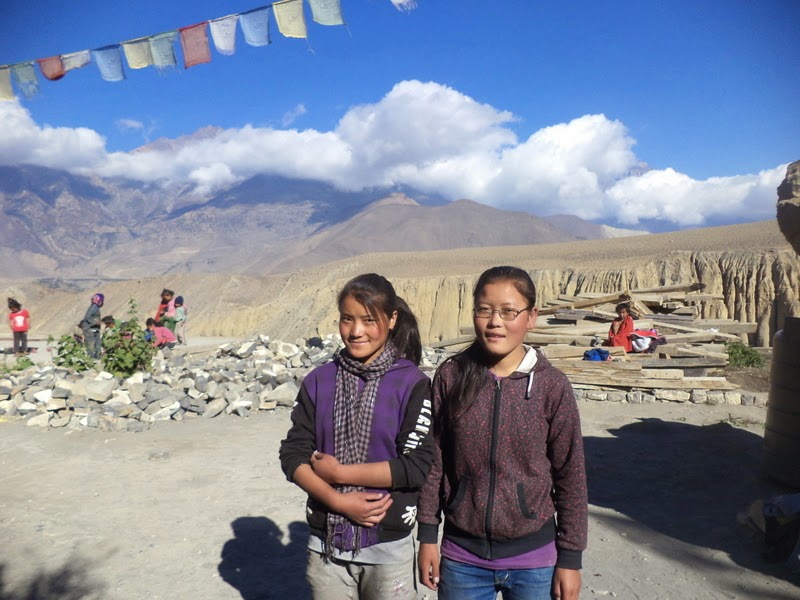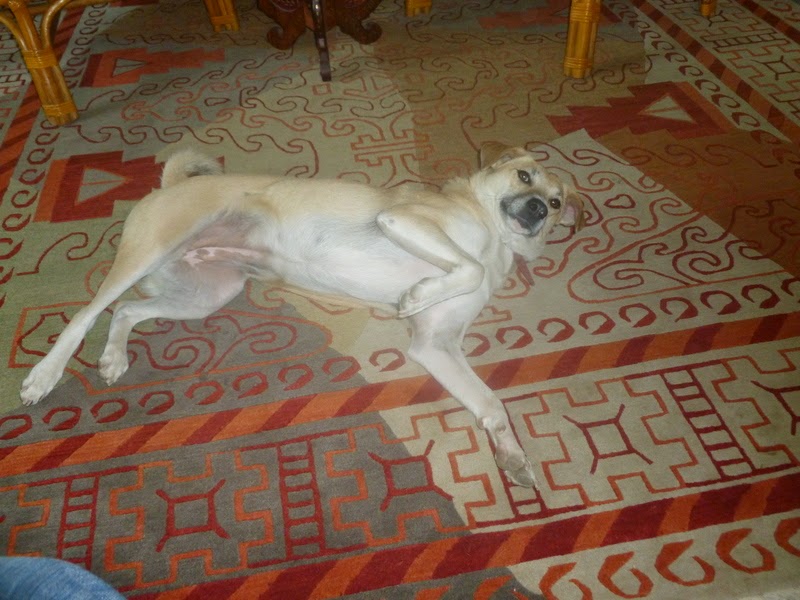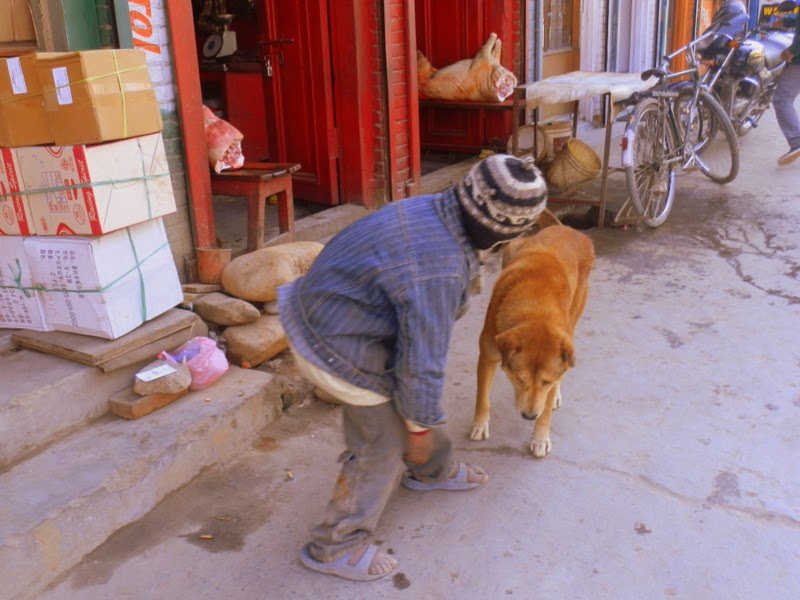 |
| We don't have fire hydrants. Our sniffable places are way more fun. |
I've been terrible at writing my blog lately because I've been so very active with my exciting, exotic life. (Well, I thought I'd try saying that, in case someone who doesn't actually know me stumbles onto this blog.) Plus my camera broke and I'm trying to write a book and I've been busy shopping at my favorite store, Excuses R Us, and also I've been working on becoming more active and healthy and getting in shape for trekking, which is kind of a big part of the point of living in the Himalayas, although to judge from the way most of us really live here, life in Nepal is more about, say, going to Salesway to find out if maybe they actually have tomato paste this season.
So in order to climb Himalayan peaks, I naturally want to find forms of exercise that don't involve going to the gym all the time. Because ... ummm ... that would be artificial. (I knew Excuses R Us would come through for me.) And it turns out that, according to various calorie counters out there in WebLand, you can burn an amazing number of calories with everyday activities. For instance, ironing burns 88 calories an hour. Setting the table burns 102 calories an hour, so if I'm planning a dinner party that involves a table that takes an hour to set because it's for a wedding in Game of Thrones, that'd work for me. (Plus, if it's a Game of Thrones wedding, there'd be all that cleanup afterwards.)
"Calories burned walking a dog" supposedly come to 107 calories for only 30 minutes. I could do that. Except for one problem. They don't calculate it by the standards of dogwalking in Kathmandu.
If you walk the dog in the "developed world" (which as we'll see soon is not in the least "developed" from a canine perspective), you walk along a pristine sidewalk at a moderate-to-brisk pace while the dog sniffs a bit and trots along and you both enjoy the scenery and burn calories and breathe the clean fresh air, and then the dog poops and you scoop it up and put it in a bag and bring it home, and that's about it.
Here you go adventuring. You collect a Fellowship and leave the safety of the Shire and travel through Dangerous Territories. Let me explain this by describing my Dog Walk this morning. We'll start at our own little hobbit hole, where Sandy hooked up with Khoire, her BFF, who lives in our compound and is sort-of owned by the landlord mainly because she won't leave and they gave up.
 |
| Local meat shop. With, of course, a street dog hanging around. If you're a dog and you come near, you are competition. And if you're a person, that's your pork dinner. Who needs Saran Wrap? |
Sandy, Khoire, Panther and Pharaoh then went down to the end of the lane, where ... uh oh ... it became the territory of other dogs. Three of them were hanging out in the street. One had a broken leg and was limping, and the others looked ready to blame any other dogs for their friend's broken leg.
Sandy didn't want to go anywhere near the Gang of Three, but I had to get the eggs, so tug tug pull as the dogs sometimes circled each other and sometimes made strategic formations to block the road and sometimes just stood there frozen and looking pointedly away, "Dog? What dog? I'm not a dog. Nope, don't see any other dogs here," but at any rate Sandy wasn't going in the direction of the egg store, in spite of tug tug pull, until ..
... saved by the Spitz!
It was one of those fluffy lap dogs with pointy fox faces and snappy teeth that you always see because they never stop yapping, and people here adore them. They're everywhere. They're turning Kathmandu into that Star Trek episode The Trouble with Tribbles, except yappier.
 |
| Kathmandu, invaded by Japanese Spitzes. |
This one was on the end of a leash. A leash? I'm not sure I've ever seen another dog on a leash in our 'hood, besides Sandy. It was probably diamond-studded, because it looked like that kind of Spitz. So since all the other dogs were self-respecting members of the great old noble house of Street Mutt, the two packs -- Sandy's Fellowship and the Gang of Three -- decided to join together and defend their mutual honor and chase away the yappy fluff-mop that was embarrassing them all and causing this blog to conflate Game of Thrones, Lord of the Rings and Star Trek into one mess of a pop culture mash-up, and it was all because of the Spitz.
But still, the Spitz is the unrecognized hero of the hour, because Spitz and Owner (or maybe Owner's Servant or more likely Spitz's Servant) were heading to the egg store, so as a result I did get to the egg store, really really fast. GET THAT SPITZ!
At that point I was trailed by the Gang of Three and Sandy's Fellowship and wrestling with Sandy to keep her from (a) running south to escape the Gang of Three, (b) running east after the Spitz, (c) running north to join the Gang of Three who turned out to be okay because they all opposed Spitzification, (d) enjoying the garbage on the road because it was there, or (e) all of the above simultaneously.
How many calories burned? Who knows? There wasn't any distance covered. This is all within a few minutes of my house. But as entertainment, it's pretty good. For both myself and the dog. I feel sorry for American dogs, who don't get to have adventures every time they leave the house. The dogs of Kathmandu travel through territories, gather whole packs of friends, face off rival gangs, make friends with rival gangs, chase roosters, get their very own holiday when dogs are worshiped, meet sheep, avoid cows, bark at goats, definitely avoid water buffaloes because they're way too big, roll in muck, and have so many stinky smells to enjoy that if the dogs of the world could pick a vacation spot, this would definitely be it.
Incidentally, here's another advantage: That part about scooping up poop and bringing it home in a little bag? Not here. Nope. It's a gift that a dog leaves to the other dogs of the 'hood, even the Spitzes if they can smell it through their perfume, and they all enjoy it and the interesting information it surely contains, and as soon as Kathmandu is advertised to the dogs of the world as an Adventure Vacation Destination, that will definitely be one of the perks.
 |
| See how cool it is to be a Nepali dog? You're always making new friends on your street. |





































